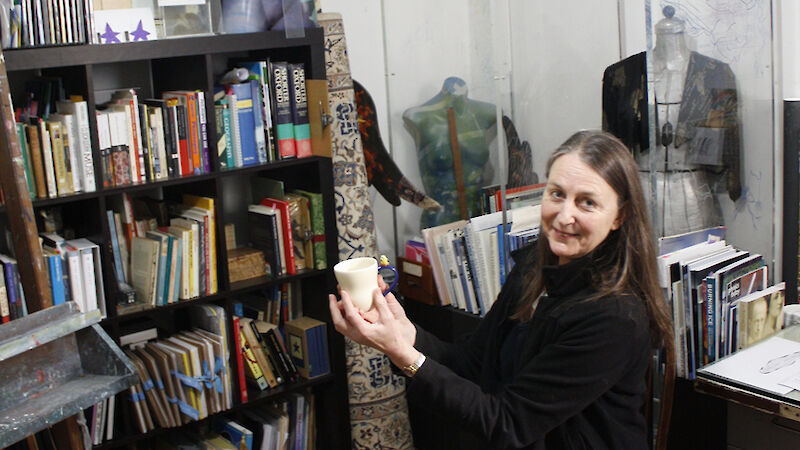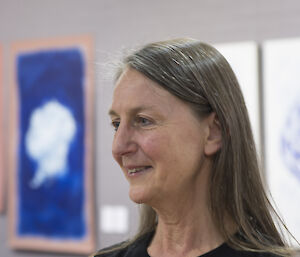Lisa Roberts is an Australian artist and interactive author. Her heritage is Aboriginal and European with family connections in Victoria, Tasmania and England. She works to reconcile new and ancient ways of knowing her place in the changing natural world. Born on Norfolk Island, Lisa’s family soon moved to Christchurch, New Zealand and then Kallista, in Victoria’s Dandenong Ranges. There she lived in the house built by her great grandparents, artists Tom Roberts and Lillian Williamson, and developed a love of nature and of making art. She played artist with her father in Tom’s old studio, and watched her mother engraving, painting and printing with Bill Onus in his Aboriginal Enterprises studio in Ferntree Gully.
After studying at the National Gallery Art School (later to become the Victorian College of the Arts), Lisa became a student of film and TV at the Swinburne Institute of Technology where she completed a Diploma of Animation (1988) and later a Masters in Animation and Interactive Media (2000). Her 2002 Antarctic Arts Fellowship inspired her to embark on a PhD to find out how animation could be used to combine scientific data and subjective responses. Completed in 2010 at the University of New South Wales, her doctorate resulted in a lexicon of primal gestural forms which she continues to use to combine expressions of understanding. The thesis is titled Antarctic Animation: Gestures and lines describe a changing environment. It includes her art and animations, and the first thesaurus of Antarctic animations.
In 2011, Lisa initiated Living Data at the University of Technology, Sydney. The aim of the program, which she was still leading in 2017, is to make visible understandings shared between scientists and other artists.
Principles of Living Data are to make and present visualisations that are:
- Engaging to the senses
- True to the science
- Clear in language
- Surprising!
Antarctic impression
The key outcomes of Lisa’s Antarctic Arts Fellowship:
42 Days — Pictures and Words describing an Antarctic voyage
42 digital inkjet prints made concurrently with the interactive CD-ROM 42 days — an animated Antarctic journal.
For each day of the 42 day voyage to Antarctica from January through March, 2002, I selected an image and a word that was most memorable. This was a difficult task with each day full of new experiences. The images were drawn from a journal I kept throughout the voyage, where I made drawings, notes and collected other evidences of these experiences. The words were assigned in hindsight, and then spoken and recorded. Pictures of my voice saying these words were lifted from the sound recording software and integrated with the imagery.
Collecting things in Antarctica is prohibited, except for strictly scientific purposes. These 42 prints are examples of mock Antarctic specimens I have been making since my return, to capture just some of the things I saw, experienced, thought, heard, was shown, explained and felt.
42 Days — An animated Antarctic journal
This interactive CD-ROM was made alongside the suite of digital prints, 42 days — Pictures and Words describing an Antarctic voyage.
This animated interactive work takes the viewer on my particular journey to Antarctica — from the end of January to the start of March, 2002, through drawings, paintings, sound and video recordings made throughout the 42 days. These are woven together to describe something of the life changing experience the voyage was for me, returning from Antarctica with a new sense of what landscape could be, of what language might be used to describe it, and of what it felt like to be a mere human in this immense and changing environment.
The Australia Council’s New Media Fund supported the development of this art and other artwork for exhibition, which were made after a voyage to Antarctica in 2002, with the Australian Antarctic Division’s then-named ‘Humanities Program'.


